Considering that the breed originates on the small island of Jersey in the English Channel, it is quite remarkable that the Jersey cow is the second-most numerous dairy breed in the world after the Holstein, with an estimated global population of two million.
This is particularly impressive as the island only has enough ground to host around 12,000 cattle in total.
Origins
Nobody knows the exact origins of the Jersey cow. There have been cows on the island for over 1,000 years and the Jersey was recognised as a separate breed around the 1700s.
It was early in the 19th century that the most important work was undertaken with selective breeding, which led to the development of the breed into what it is now.
In 1763, the States of Jersey first prohibited the importation of any cattle. This ban was lifted in 2008, when they finally bowed to pressure from the few remaining breeders to allow cattle semen to be brought in. Until this point, the famous Jersey breed remained 100% pure-bred in its native island.
In 1866, the Jersey herd book was formed. There were 1,000 herds with 6,000 milking cows. Every pedigree Jersey cow in the world can trace its ancestry back to this herd book.
The first animal registered in the book was a bull named Dandy, owned by James Godfray of St Martin. The first cow registered was named Daisy, belonging to P Paisnel of St Clement.
Dandy was grey and white, while Daisy was described as light brown and white. This wasn’t unusual in the early years of the breed, with variations of fawn, dun, silver and ginger, right through to white.
By the early 1900s, the whole fawn-coloured cattle that we are familiar with today had come to dominate.
The Jersey cow is the second-most numerous dairy breed in the world after the Holstein, with an estimated global population of two million
What made the Jersey herd book unique was its system of preliminary registration at birth and subsequent qualification for entry into the herd book proper by inspection.
These inspections became known as herd book exams and they remained in force until 1972. These exams became a crucial factor in the development of the Jersey breed.
The inspectors awarded classifications of highly commended or commended, with poorer stock rejected. This classification would then be printed in the herd book. Nearly 80,000 stock were given a classification until it was abolished.

Pure Jersey cows grazing on fresh pastures in Cork.
Fast forward to 2016 on Jersey island and there are 21 herds with nearly 3,000 cows. The average herd size standing of 140 cows consists of herds ranging from 10 to 240 cows.
Twenty of these herds sell their milk to the Jersey Milk Marketing Board, which insists that all cows supplying milk are registered in the Jersey herd book to ensure milk is consistent in quality.
Jerseys were exported to England during the 17th century and to America by 1850, Australia by 1854, New Zealand by 1862, Canada by 1868, South Africa by 1877, Sweden by 1893 and Denmark by 1896.
Introduction to Ireland
The first Jerseys were imported into Ireland from Jersey island by Ernest Bewley in 1903, to supply the growing demand for good-quality milk and cream for his cafes and bakery in Dublin.
The Jersey Cattle Society of Ireland was formed in 1926. Correctly, it should’ve being called an association, as, at that time, the Jersey cattle in Ireland were all registered in the UK Jersey herd book.
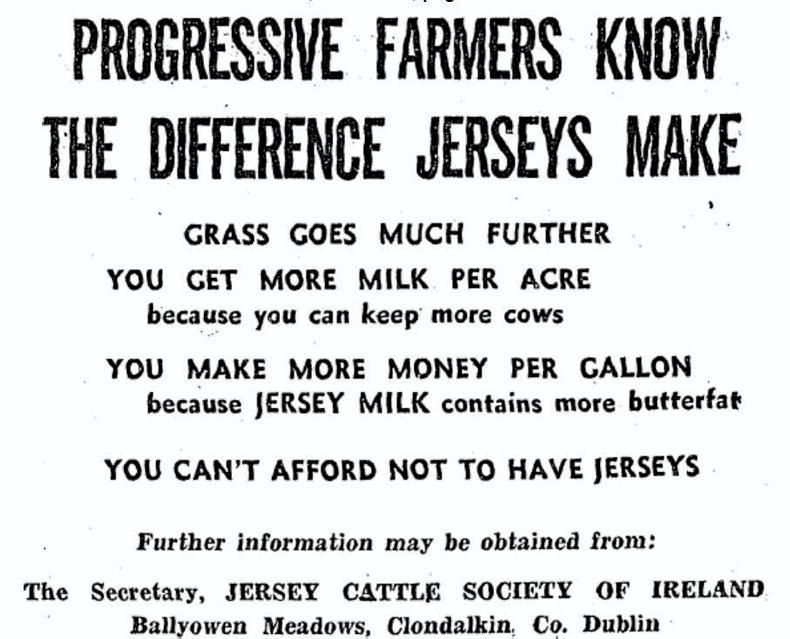
Advert in the Irish Farmers Journal March 1961.
In June 2004, the Jersey Cattle Society of Ireland Ltd was registered. The first committee consisted of Tim O’Connell (current president), Michael O’Connell, Richard Tyrrell, Rodger Bewley, Keith Bewley, Ben Tyrrell, John Swanton and Gladys Graham.
Today, the society has 170 members with approximately 3,000 pedigree animals and goes by the Jersey Cattle Association of Ireland.
This number is complemented by almost 18,000 calves born in Ireland in 2019 as a result of Jersey AI sires, which has increased over the last 10 to 15 years.
Current council
The association formed a new board in 2018, with Tim O’Connell as president, George Lowe as chair and Jer Daly as treasurer.
Rita Eivers was appointed secretary, but has since been replaced by Avril Helen.
Board members are Pat Ahern, Kevin Brady and Pat Gaynor.
One of the biggest changes made in recent months has been the outsourcing of registrations to the IHFA.
This will increase efficiency, as certificates will now be generated automatically once the calf is named when registering its birth.
All members have received communication on this, but if anyone has any questions they can get in touch with the association.
Read more
Autumn sales review: pedigree sales fare better than expected
€1m Irish bull set for TV debut
Considering that the breed originates on the small island of Jersey in the English Channel, it is quite remarkable that the Jersey cow is the second-most numerous dairy breed in the world after the Holstein, with an estimated global population of two million.
This is particularly impressive as the island only has enough ground to host around 12,000 cattle in total.
Origins
Nobody knows the exact origins of the Jersey cow. There have been cows on the island for over 1,000 years and the Jersey was recognised as a separate breed around the 1700s.
It was early in the 19th century that the most important work was undertaken with selective breeding, which led to the development of the breed into what it is now.
In 1763, the States of Jersey first prohibited the importation of any cattle. This ban was lifted in 2008, when they finally bowed to pressure from the few remaining breeders to allow cattle semen to be brought in. Until this point, the famous Jersey breed remained 100% pure-bred in its native island.
In 1866, the Jersey herd book was formed. There were 1,000 herds with 6,000 milking cows. Every pedigree Jersey cow in the world can trace its ancestry back to this herd book.
The first animal registered in the book was a bull named Dandy, owned by James Godfray of St Martin. The first cow registered was named Daisy, belonging to P Paisnel of St Clement.
Dandy was grey and white, while Daisy was described as light brown and white. This wasn’t unusual in the early years of the breed, with variations of fawn, dun, silver and ginger, right through to white.
By the early 1900s, the whole fawn-coloured cattle that we are familiar with today had come to dominate.
The Jersey cow is the second-most numerous dairy breed in the world after the Holstein, with an estimated global population of two million
What made the Jersey herd book unique was its system of preliminary registration at birth and subsequent qualification for entry into the herd book proper by inspection.
These inspections became known as herd book exams and they remained in force until 1972. These exams became a crucial factor in the development of the Jersey breed.
The inspectors awarded classifications of highly commended or commended, with poorer stock rejected. This classification would then be printed in the herd book. Nearly 80,000 stock were given a classification until it was abolished.

Pure Jersey cows grazing on fresh pastures in Cork.
Fast forward to 2016 on Jersey island and there are 21 herds with nearly 3,000 cows. The average herd size standing of 140 cows consists of herds ranging from 10 to 240 cows.
Twenty of these herds sell their milk to the Jersey Milk Marketing Board, which insists that all cows supplying milk are registered in the Jersey herd book to ensure milk is consistent in quality.
Jerseys were exported to England during the 17th century and to America by 1850, Australia by 1854, New Zealand by 1862, Canada by 1868, South Africa by 1877, Sweden by 1893 and Denmark by 1896.
Introduction to Ireland
The first Jerseys were imported into Ireland from Jersey island by Ernest Bewley in 1903, to supply the growing demand for good-quality milk and cream for his cafes and bakery in Dublin.
The Jersey Cattle Society of Ireland was formed in 1926. Correctly, it should’ve being called an association, as, at that time, the Jersey cattle in Ireland were all registered in the UK Jersey herd book.

Advert in the Irish Farmers Journal March 1961.
In June 2004, the Jersey Cattle Society of Ireland Ltd was registered. The first committee consisted of Tim O’Connell (current president), Michael O’Connell, Richard Tyrrell, Rodger Bewley, Keith Bewley, Ben Tyrrell, John Swanton and Gladys Graham.
Today, the society has 170 members with approximately 3,000 pedigree animals and goes by the Jersey Cattle Association of Ireland.
This number is complemented by almost 18,000 calves born in Ireland in 2019 as a result of Jersey AI sires, which has increased over the last 10 to 15 years.
Current council
The association formed a new board in 2018, with Tim O’Connell as president, George Lowe as chair and Jer Daly as treasurer.
Rita Eivers was appointed secretary, but has since been replaced by Avril Helen.
Board members are Pat Ahern, Kevin Brady and Pat Gaynor.
One of the biggest changes made in recent months has been the outsourcing of registrations to the IHFA.
This will increase efficiency, as certificates will now be generated automatically once the calf is named when registering its birth.
All members have received communication on this, but if anyone has any questions they can get in touch with the association.
Read more
Autumn sales review: pedigree sales fare better than expected
€1m Irish bull set for TV debut






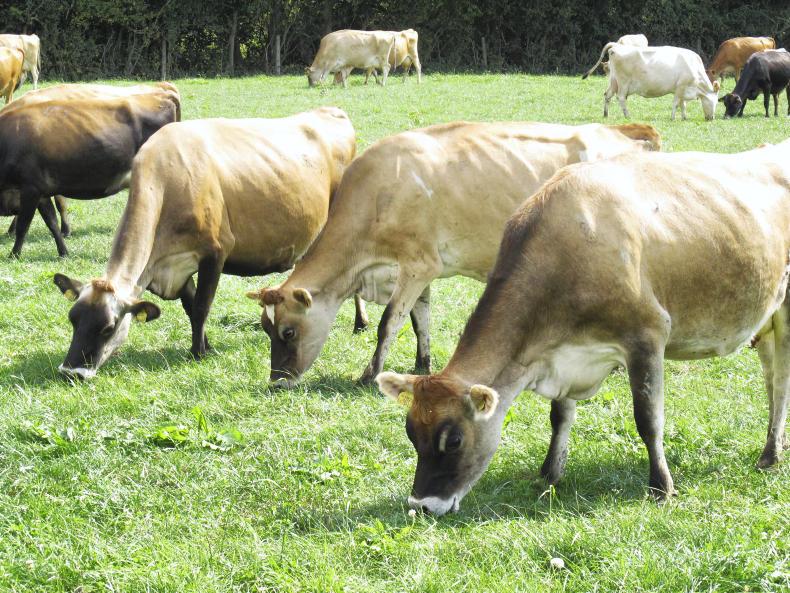


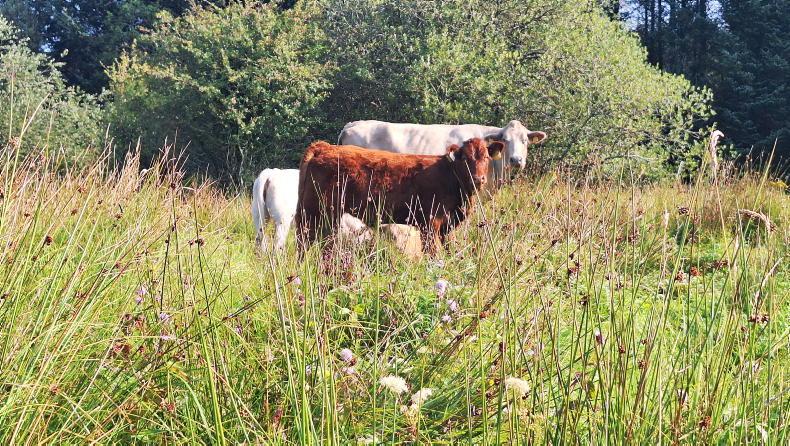
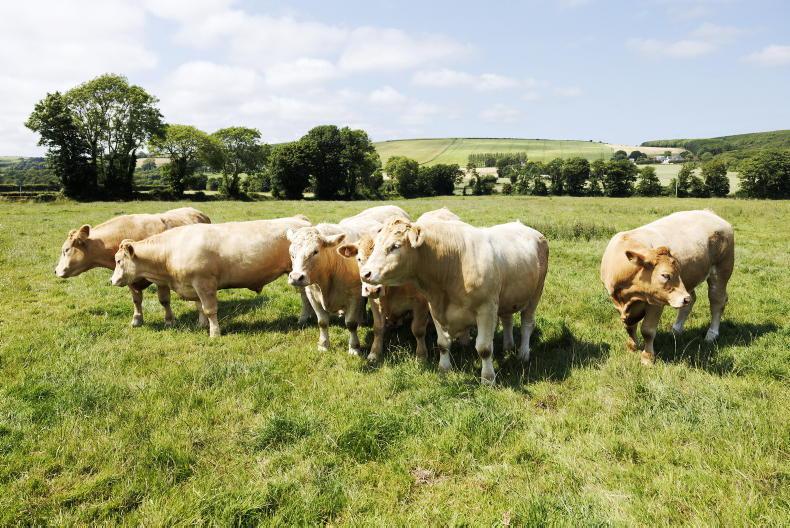
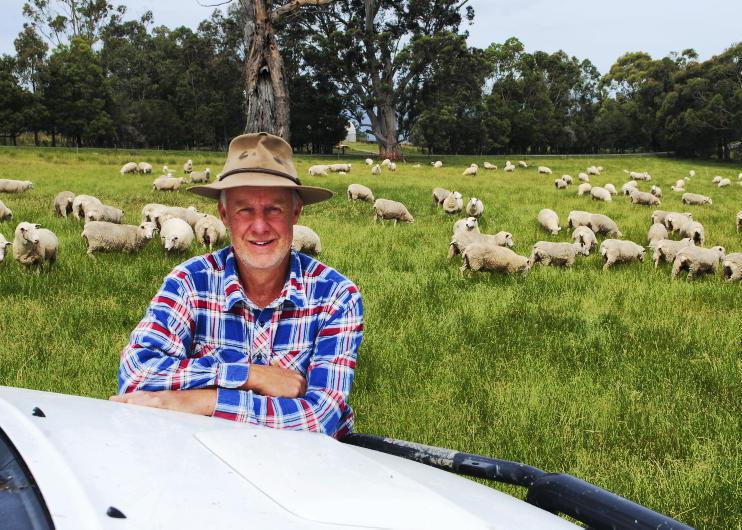
SHARING OPTIONS